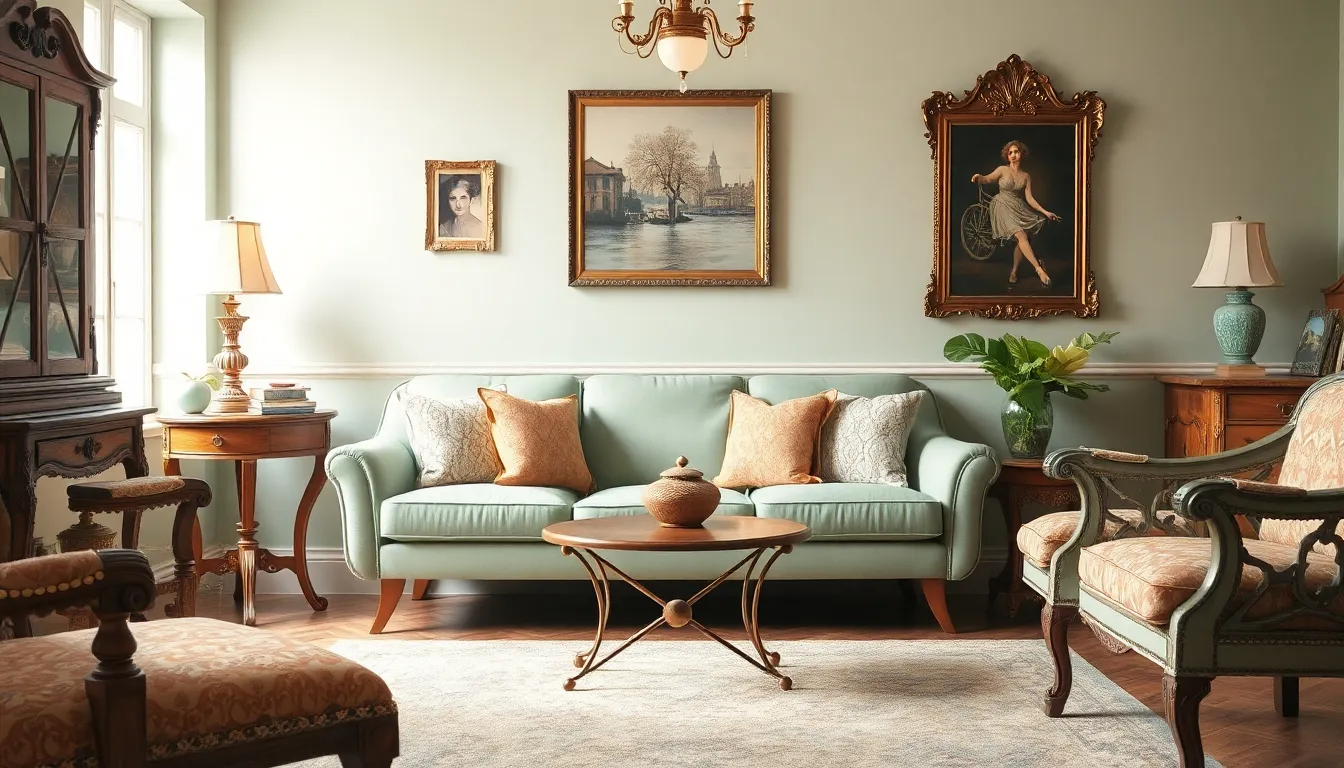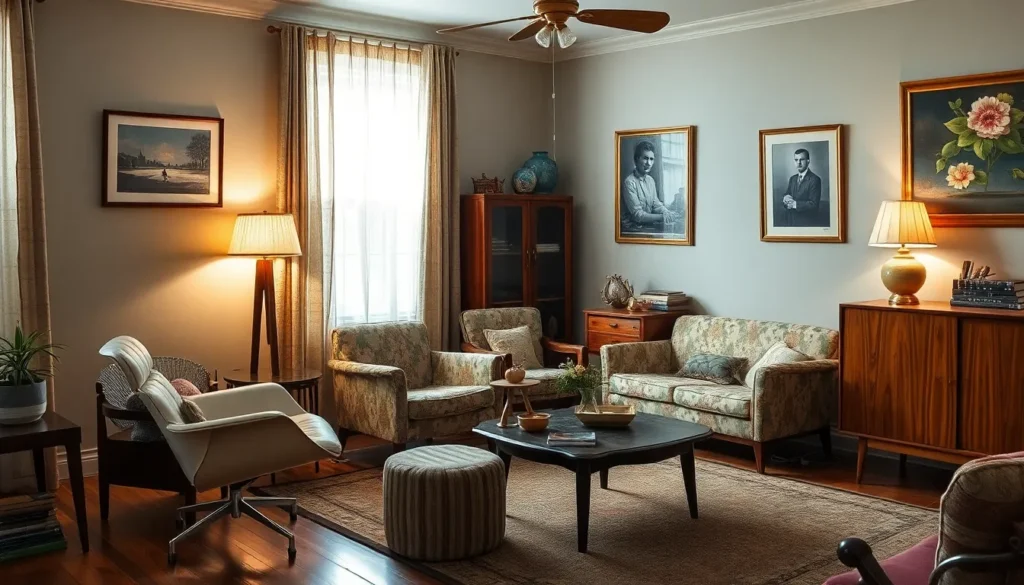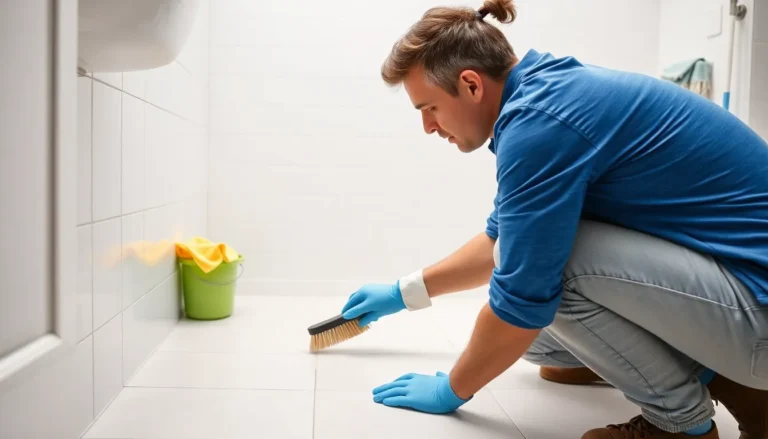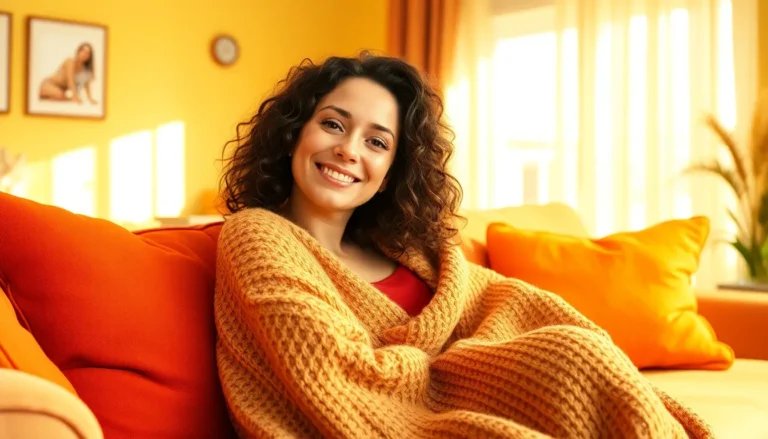Step into a world where time stands still and charm reigns supreme. Vintage interiors bring a delightful mix of nostalgia and character that can transform any space into a cozy haven. Imagine curling up in a mid-century armchair, surrounded by quirky decor that tells stories of yesteryears. It’s like living in a Pinterest board, but without the pressure to have perfect lighting.
Table of Contents
ToggleWhat Are Vintage Interiors?
Vintage interiors encompass design elements sourced from previous decades, specifically from the early to mid-20th century. They exude a sense of nostalgia, often featuring distinctive furniture, textiles, and accessories that reflect historical styles. Characterized by their unique charm, vintage pieces contribute to a cohesive look that blends warmth and personality within any space.
Antiques represent one category within vintage interiors, showcasing items that are at least 100 years old. Collectible decor often finds a place in these settings, enriching them with stories and history. Mid-century modern furniture, with its clean lines and functional forms, marks another significant trend, bringing sleek aesthetics into vintage designs.
Textiles play a critical role in shaping vintage interiors. Fabrics such as plaid, floral prints, and bold patterns enhance the visual appeal of these spaces. Accessories like vintage lamps, mirrors, and artwork also serve as focal points, drawing attention and adding depth.
Incorporating vintage elements encourages creativity in decoration. Mixing various styles, such as farmhouse and industrial, creates an eclectic look that resonates with personal tastes. Color palettes in vintage interiors often feature muted tones or pastels, complementing the aged characteristics of furniture and decor.
Ultimately, vintage interiors invite individuals to curate their spaces thoughtfully, focusing on quality and character over fleeting trends. Emphasizing nostalgia and individuality, vintage design remains an enduring choice for many seeking to establish unique and inviting environments.
Characteristics of Vintage Interiors

Vintage interiors embody a unique charm that emphasizes individuality and subtle elegance. They draw from design elements of previous decades, creating intimate and inviting spaces.
Furniture Styles
Unique furniture styles define vintage interiors. Mid-century modern pieces with their sleek lines offer a perfect contrast to ornate antiques that evoke history. Each item serves as a conversation piece, showcasing craftsmanship typical of its era. In addition, principles like functionality and form intertwine to create balanced rooms. A combination of wooden accents, upholstered sofas, and retro chairs enhances the overall aesthetic while ensuring comfort.
Color Palettes
Muted tones and pastels often adorn vintage interiors. Soft shades of mint green, dusty pink, and pale blue create a soothing backdrop for antique furniture. Bright colors sometimes punctuate the palette, capturing attention and allowing room elements to shine. Earthy hues such as ochre and terracotta can also evoke warmth, enhancing the cozy atmosphere. Vintage color schemes embrace both subtlety and vibrancy, establishing a welcoming environment.
Decorative Accessories
Decorative accessories highlight the personality of vintage spaces. Vintage lamps, often found with intricate bases, serve as both practical and artistic elements. Artwork showcasing classic themes can enhance walls, while decorative mirrors add depth and light to a room. Textiles like lace curtains and patterned cushions contribute texture and comfort. Incorporating these accessories creates a harmonious blend that embodies nostalgia and style.
Popular Vintage Interior Trends
Vintage interiors showcase a variety of styles that reflect the charm of bygone eras. Designers often draw inspiration from distinct movements, each contributing to the overall appeal.
Mid-Century Modern
Mid-century modern design features simple forms, clean lines, and functional beauty. Furniture pieces from this era, such as Eames chairs and teak sideboards, offer a timeless aesthetic. Key characteristics include organic shapes and an emphasis on integration with nature. Color palettes often include vibrant hues that bring warmth to spaces. This trend emphasizes creating balance between form and function, making it popular in contemporary homes.
Art Deco
Art Deco defines luxury and glamour with its bold geometric shapes and rich materials. This style incorporates elements like mirrored surfaces, chrome accents, and intricate motifs. Rich colors, including gold, black, and deep blues, elevate the elegance of interiors. Furniture typically features opulent fabrics and sculptural designs that serve as statement pieces. The allure of Art Deco lies in its ability to merge functionality with a lavish sense of style.
Rustic Vintage
Rustic vintage interiors evoke a cozy, homey feeling with their natural materials and weathered finishes. Wood beams, reclaimed barn doors, and antique furniture play crucial roles in this style. Textiles like burlap and lace add texture and warmth to spaces. Earthy color palettes often prevail, creating a serene environment. This trend highlights the beauty of imperfection and storytelling through decor elements, establishing a unique character in each room.
Tips for Creating Vintage Interiors
Creating vintage interiors involves careful selection and a keen eye for detail. Following a few practical tips ensures a beautifully curated space that reflects personal style.
Sourcing Vintage Items
Sourcing vintage items requires exploration. Antique shops, flea markets, and estate sales offer unique finds. Online platforms provide access to greater inventories, including well-known sites like Etsy and eBay. Consider local thrift stores for affordable treasures. Focusing on quality is essential, as it enhances durability while ensuring style. Collecting pieces with unique stories adds character to the home. Specifically, look for statement items, like a retro sofa or a vintage coffee table, to anchor the space.
Mixing Vintage with Modern
Mixing vintage with modern creates a dynamic environment. One effective approach involves choosing a few essential vintage pieces to complement contemporary elements. For example, pairing a mid-century chair with a sleek modern table showcases contrast. Balance plays a significant role, ensuring that neither style overshadows the other. Combining textures enhances visual interest; a vintage rug adds warmth to minimalist furniture. Creating cohesive color palettes helps vintage items seamlessly integrate into the overall design. Flexibility in design invites creativity, allowing for individual expression while maintaining an inviting atmosphere.
Embracing vintage interiors offers a unique opportunity to create spaces that are rich in character and history. By thoughtfully curating pieces from different eras, individuals can craft environments that tell a story while reflecting their personal style. The blend of nostalgia and modernity allows for a dynamic aesthetic that feels both inviting and timeless.
With careful selection and an eye for detail, vintage decor can transform any home into a cozy retreat. Whether through mid-century modern elegance or rustic charm, the allure of vintage design continues to inspire and captivate. It’s not just about decorating; it’s about creating a living space that resonates with warmth and individuality.






